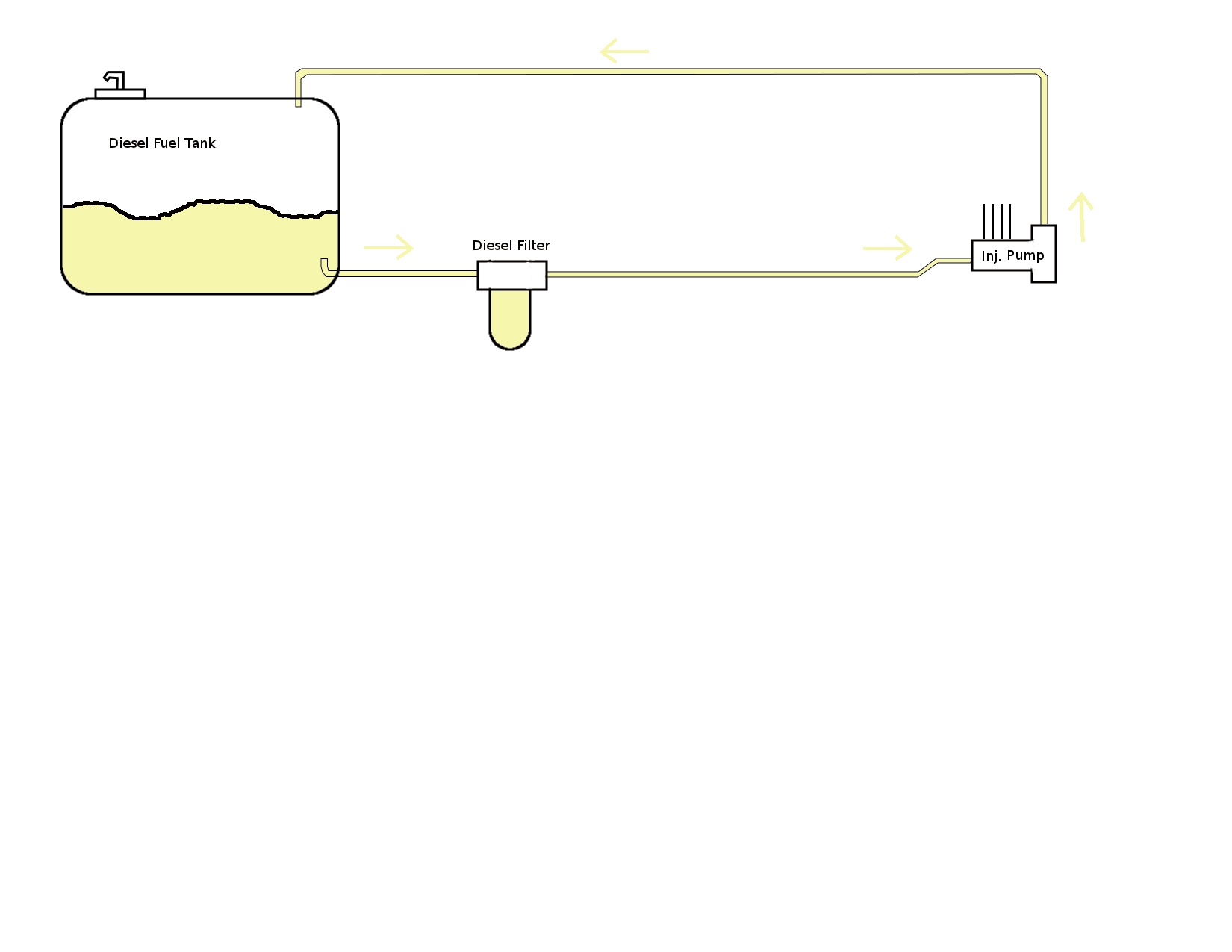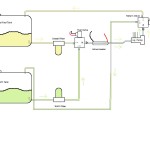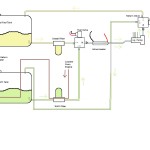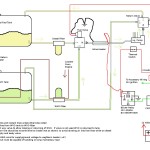
A WVO conversion allows you to burn oil instead of diesel as the fuel that powers a diesel engine. Diesel engines have a long history of using oil as a fuel. Most modern ships use diesel engines and run on bunker fuel … bunker fuel is a fancy word for oil. One of the original diesel designs ran on peanut oil … it was developed for farmers with the assumption that a portion of their land would be used to grow crops that could be pressed for oil. The idea was to replace farm animals and the crops devoted to them with a diesel engine. This means that converting a diesel engine to run on oil is just taking it back to its origins so to speak …

The flow of fuel in a typical diesel is fairly simple; the injection pump (sometimes referred to as IP) attached to the diesel engine pumps diesel from the fuel tank through a filter and into the injection pump. When the fuel is in the injection pump it is injected into the engine where it is combusted to move the vehicle. The pump is usually drawing more fuel than it needs and the excess fuel is returned to the fuel tank via a return line. This picture can be a little more complicated if a lift pump is also used. A lift pump is usually either in or right after the fuel tank and it assists the injector pump by pumping the fuel from the tank to the injection pump; it is used when the injection pump is either not designed or not powerful enough to both pump and inject the fuel.
 In order to convert the vehicle to run on WVO (or oil generally) you have a couple of options; I went with a two tank system. The two tank system basically keeps the original fuel system and then adds a second tank for the WVO so that you can run on either diesel or oil. Valves (mechanical or electrical) are used to switch between the diesel and oil tanks. The WVO tank and filter essentially duplicate the existing fuel delivery system. This allows you to run the vehicle on oil or diesel, depending on what is available. Unfortunately, it is not actually that simple …
In order to convert the vehicle to run on WVO (or oil generally) you have a couple of options; I went with a two tank system. The two tank system basically keeps the original fuel system and then adds a second tank for the WVO so that you can run on either diesel or oil. Valves (mechanical or electrical) are used to switch between the diesel and oil tanks. The WVO tank and filter essentially duplicate the existing fuel delivery system. This allows you to run the vehicle on oil or diesel, depending on what is available. Unfortunately, it is not actually that simple …
 Oil is viscous compared to diesel fuel (especially when it is cold); this means it does not flow as easily and it is harder to pump. If cold oil is used it will cause problems; it will stress the pump and clog the injectors (bad things). To solve this problem the oil needs to be heated. The hot engine coolant is used for this purpose. The coolant lines are tee’d and a heating loop is usually run through the WVO tank and filter assembly. This loop pre-heats the oil and allows it to flow more easily. An in-line heater is also usually placed right before the injector pump to add even more heat. All of this heat reduces the viscosity of the oil; making it flow better and pass through the injectors without fouling them. Two other modifications are also common; the addition of a lift pump for the oil and a looped return. A lift pump can be added right after the WVO tank to help push the oil to the injection pump. Some care has to be taken when adding a lift pump because if it is too powerful it can cause problems for the existing injector pump. A looped return means that the excess fuel that is not used at the injector pump is ‘looped’ back to the input of the injector pump rather than being returned to the tank; the pump is not working as hard to draw cold, viscous oil all the way from the tank as it is now drawing some already heated oil directly from the return flow of the pump. This sounds confusing but it does work, the downside is that if air gets into the fuel lines (much more possible with this setup) it is difficult to track down.
Oil is viscous compared to diesel fuel (especially when it is cold); this means it does not flow as easily and it is harder to pump. If cold oil is used it will cause problems; it will stress the pump and clog the injectors (bad things). To solve this problem the oil needs to be heated. The hot engine coolant is used for this purpose. The coolant lines are tee’d and a heating loop is usually run through the WVO tank and filter assembly. This loop pre-heats the oil and allows it to flow more easily. An in-line heater is also usually placed right before the injector pump to add even more heat. All of this heat reduces the viscosity of the oil; making it flow better and pass through the injectors without fouling them. Two other modifications are also common; the addition of a lift pump for the oil and a looped return. A lift pump can be added right after the WVO tank to help push the oil to the injection pump. Some care has to be taken when adding a lift pump because if it is too powerful it can cause problems for the existing injector pump. A looped return means that the excess fuel that is not used at the injector pump is ‘looped’ back to the input of the injector pump rather than being returned to the tank; the pump is not working as hard to draw cold, viscous oil all the way from the tank as it is now drawing some already heated oil directly from the return flow of the pump. This sounds confusing but it does work, the downside is that if air gets into the fuel lines (much more possible with this setup) it is difficult to track down.
 Your final fuel delivery system will look something like this diagram. In typical operation you start your vehicle on diesel and switch to oil after the coolant has warmed the oil sufficiently. When you are ready to stop your vehicle you switch back to diesel and purge your fuel lines of oil … meaning you run on diesel long enough to get the oil out of your engine and fuel lines. This ensures that when you go to start your vehicle later it will not be full of cold, viscous oil that will make starting really hard and could damage your engine. It is possible to use a single 6 port valve instead of two 3 port valves. I went with the two three port valves so that when purging I could continue to loop the return line … avoiding getting a little oil in the diesel tank every time. This is not necessary but is what I decided to do.
Your final fuel delivery system will look something like this diagram. In typical operation you start your vehicle on diesel and switch to oil after the coolant has warmed the oil sufficiently. When you are ready to stop your vehicle you switch back to diesel and purge your fuel lines of oil … meaning you run on diesel long enough to get the oil out of your engine and fuel lines. This ensures that when you go to start your vehicle later it will not be full of cold, viscous oil that will make starting really hard and could damage your engine. It is possible to use a single 6 port valve instead of two 3 port valves. I went with the two three port valves so that when purging I could continue to loop the return line … avoiding getting a little oil in the diesel tank every time. This is not necessary but is what I decided to do.